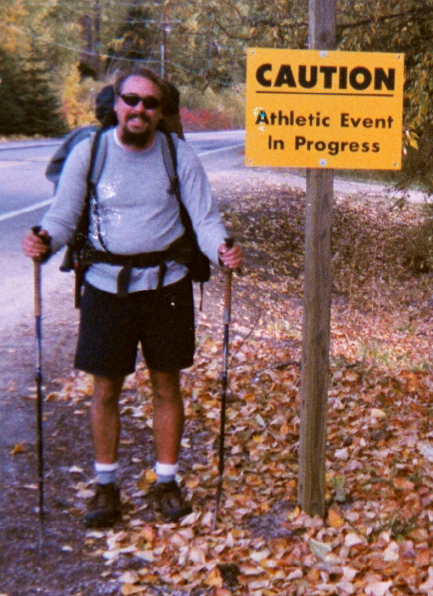How They Made It
How Alan Humphrey and his wife Irene Faraklas survived in the Grand Canyon. From the National Park Services Daily report.( June 2, 2008)
They stayed with the water and let people know when they should be heard from.
Following the happy conclusion of last week’s search for Alan Humphrey and his spouse, Irene Faraklas, rangers were able to learn what happened to them during their hike on the Royal Arch route. The couple was reported overdue from their backpacking trip on Sunday, May 25th, and a search began for them the next day. By May 28th, five days after they were expected to complete their trip, a number of ground crews were searching high-probability areas on foot, helicopter flight crews were searching drainages and rim areas increasingly distant from the couple’s anticipated route, and a technical team from Zion National Park was searching the lower Royal Arch Drainage using canyoneering techniques. Around 5 p.m. that day, a ground search team found the couple – tired, hungry, but otherwise in good condition – near the South Bass trail in the Royal Arch route area. Personnel working on the incident, and the couple themselves, attribute the fortunate outcome to being prepared and making good decisions. Humphrey and Faraklas had backpacked at the Grand Canyon before and were familiar with the rugged nature of the terrain and the changeable weather conditions (conditions during their 11 days in the canyon ranged from “temperatures in the 90s to hail and freezing,” according to Faraklas). While they had never hiked the Royal Arch route, they had done research on the route and had sought the advice of others who had previously hiked it. They set specific dates when they would be meeting people after their hike, and they made sure that at least one person knew what they planned to do while they were at the Grand Canyon. In spite of all of their preparations, on the last leg of their trip, they overshot their exit route and attempted to reach the rim via the wrong side canyon. Eventually, they realized they were lost – and to a degree stuck – but they didn’t panic. Instead, they assessed their situation, developed a plan, and made a commitment to stick with that plan no matter what. They first decided to be prepared for up to a week on their own and rationed their one day of remaining food accordingly. Then they found water and a source of shade and decided to stay put until help arrived or their meager supplies started to run out. Above all they made a decision to stick together. These decisions, it is believed, are a big part of why they here today. They shared the burden of decision making, they kept track of each other’s condition (physically, mentally and emotionally), they kept each other on track, and they stuck to the plan. Finally, as their rations began to run out, forcing a last ditch attempt to seek aid at the river, searchers and this resourceful pair of lost backpackers found each other. [Submitted by Shannan Marcak and Maureen Oltrogge, Public Affairs Officers]



No comments:
Post a Comment